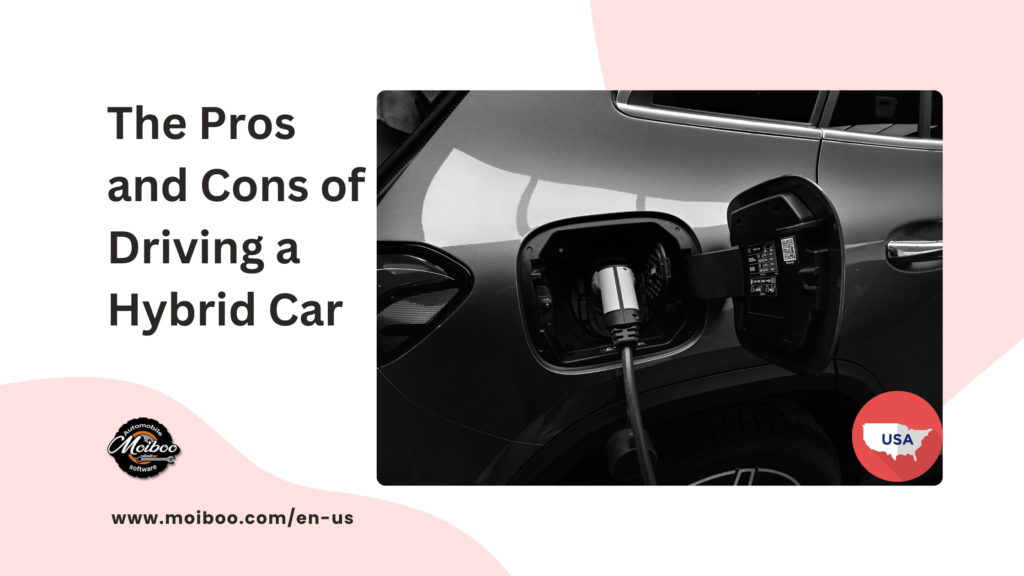“Discovering the Benefits and Drawbacks of Driving a Hybrid Car: Is It the Right Choice for You?” – A Comprehensive Analysis.

Hybrid cars are becoming more popular each day, and for good reason: they offer a number of benefits for drivers who want to save money, reduce emissions, and enjoy a smooth and quiet ride. However, hybrid cars are not perfect for everyone: they also have some drawbacks that may make them less appealing for some drivers. In this blog post, we will explore the pros and cons of driving a hybrid car, so you can decide if it is the right choice for you.
What is a hybrid car and how does it work?
A hybrid car is a vehicle that uses two or more sources of power to move: typically, an internal combustion engine (ICE) that runs on gasoline or diesel, and an electric motor that runs on electricity stored in a battery. There are different types of hybrid cars, such as regular hybrids, mild hybrids, and plug-in hybrids, that vary in how they use and charge their electric motors. However, the basic principle is the same: the electric motor assists the ICE to improve fuel efficiency and reduce emissions, and can also power the car by itself for short distances or at low speeds.
Pros of driving a hybrid car
Driving a hybrid car has many advantages, such as:
- They are environmentally-friendly: Hybrid cars produce less carbon dioxide and other greenhouse gases than conventional cars, because they use less gasoline or diesel to travel the same distance. They also have lower tailpipe emissions when they run on electric power alone. According to the U.S. Environmental Protection Agency (EPA), a typical passenger vehicle emits 4.6 metric tons of carbon dioxide annually1, while a hybrid car can emit as low as 1.8 metric tons. This means that by driving a hybrid car, you can reduce your carbon footprint and help fight climate change.
- They save money: Hybrid cars are more fuel-efficient than conventional cars, because they use less gasoline or diesel to travel the same distance. They also have lower maintenance costs, because they have fewer moving parts and less wear and tear on the ICE. According to the U.S. Department of Energy (DOE), the average annual fuel cost for a conventional car is $1,500, while the average annual fuel cost for a hybrid car is $900. This means that by driving a hybrid car, you can save up to $600 per year on fuel alone. You may also save money on taxes, insurance, and registration fees, depending on where you live and what incentives are available for hybrid car owners.
- They’re quiet: Hybrid cars are quieter than conventional cars, because they have less engine noise and vibration. They are especially silent when they run on electric power alone, which can create a more relaxing and comfortable driving experience. You may also enjoy less road noise and wind noise, because hybrid cars tend to have better aerodynamics and insulation than conventional cars.
- They often require less maintenance: Hybrid cars often require less maintenance than conventional cars, because they have fewer moving parts and less wear and tear on the ICE. They also have regenerative braking systems, which use the electric motor to slow down the car and recharge the battery, reducing the need for brake pads and rotors replacement. You may still need to perform regular maintenance tasks such as oil changes, tire rotations, and fluid checks, but you may need to do them less frequently or at longer intervals than with conventional cars.
Cons of driving a hybrid car
Driving a hybrid car also has some disadvantages, such as:
- Higher upfront costs: Hybrid cars are more expensive than conventional cars upfront, because they have more complex systems and components, such as batteries, electric motors, and power electronics. The price difference can vary depending on the type, model, and features of the hybrid car, but it can range from a few thousand dollars to tens of thousands of dollars. According to Kelley Blue Book, the average price for a new conventional car in 2023 was $40, 000, while the average price for a new hybrid car in 2023 was $45.This means that by buying a hybrid car, you may pay up to $5, 000 more upfront than buying a conventional car.
- You may be able to recoup some of this cost through fuel savings: Tax credits, and other incentives over time, but it may take several years to break even Maintenance can be expensive (when it’s needed). Hybrid cars may require less maintenance than conventional cars, but when they do need maintenance, it can be more expensive and complicated. This is because hybrid cars have more complex systems and components, such as batteries, electric motors, and power electronics, that may require specialized tools, skills, and parts to repair or replace. You may also have a harder time finding a mechanic who is qualified and experienced in working with hybrid cars, especially if you own a rare or older model. According to Consumer Reports, the average annual maintenance cost for a conventional car is $1,200, while the average annual maintenance cost for a hybrid car is $1,400. This means that by driving a hybrid car, you may pay up to $200 more per year on maintenance than driving a conventional car.
- They still produce fossil fuel emissions: Hybrid cars produce less fossil fuel emissions than conventional cars, but they still produce some. This is because hybrid cars still use gasoline or diesel as one of their sources of power, and they still emit carbon dioxide and other greenhouse gases from their tailpipes when they run on their ICEs. They also depend on the electricity grid to charge their batteries, which may be powered by fossil fuels in some regions. According to the DOE, the average annual well-to-wheel emissions for a conventional car are 11,435 pounds of carbon dioxide equivalent (CO2e), while the average annual well-to-wheel emissions for a hybrid car are 6,777 pounds of CO2e. This means that by driving a hybrid car, you may emit up to 4,658 pounds less of CO2e per year than driving a conventional car. However, this is still more than driving an electric car, which can emit as low as 3,774 pounds of CO2e per year, depending on the electricity mix.
- They have lower range and power than conventional cars: Hybrid cars have lower range and power than conventional cars, because they have smaller fuel tanks and engines than conventional cars. They also have heavier batteries and electric motors that add to their weight and reduce their performance. According to Edmunds, the average range for a conventional car is 412 miles, while the average range for a hybrid car is 373 miles. This means that by driving a hybrid car, you may travel up to 39 miles less on a full tank than driving a conventional car. You may also experience slower acceleration and lower top speed when driving a hybrid car, especially when running on electric power alone.
Conclusion
Driving a hybrid car has many pros and cons that depend on various factors. Some of the pros are: they are environmentally-friendly, they save money, they’re quiet, they often require less maintenance, they help you drive more efficiently, and they deliver excellent performance for city driving. Some of the cons are: they have higher upfront costs than conventional cars, they have lower range and power than conventional cars, they have complex systems that may be difficult to repair, and they still produce fossil fuel emissions.
Whether you should drive a hybrid car or not depends on your personal preferences, budget, lifestyle, and driving habits. If you want to reduce your environmental impact and save money on fuel and maintenance in the long run, driving a hybrid car may be a good option for you. However, if you want to avoid high upfront costs and enjoy higher range and power in your vehicle, driving a conventional car may be a better option for you.
If you are interested in driving a hybrid car, you may want to compare different models and features before making your decision. You can use our online tool to find the best hybrid car for your needs, based on your budget, preferences, and location. You can also read reviews from other drivers who have tried different hybrid cars, and learn from their experiences.
